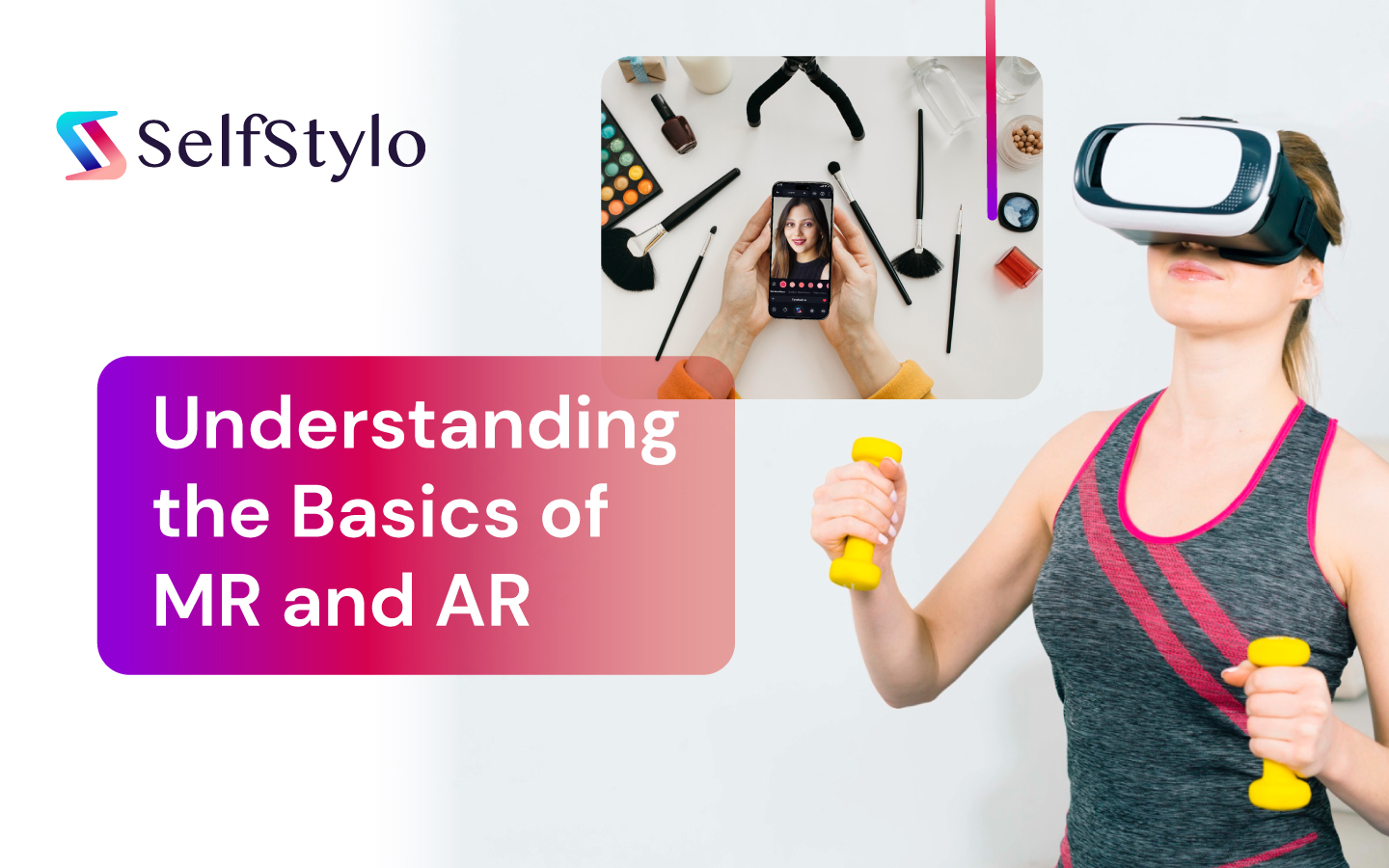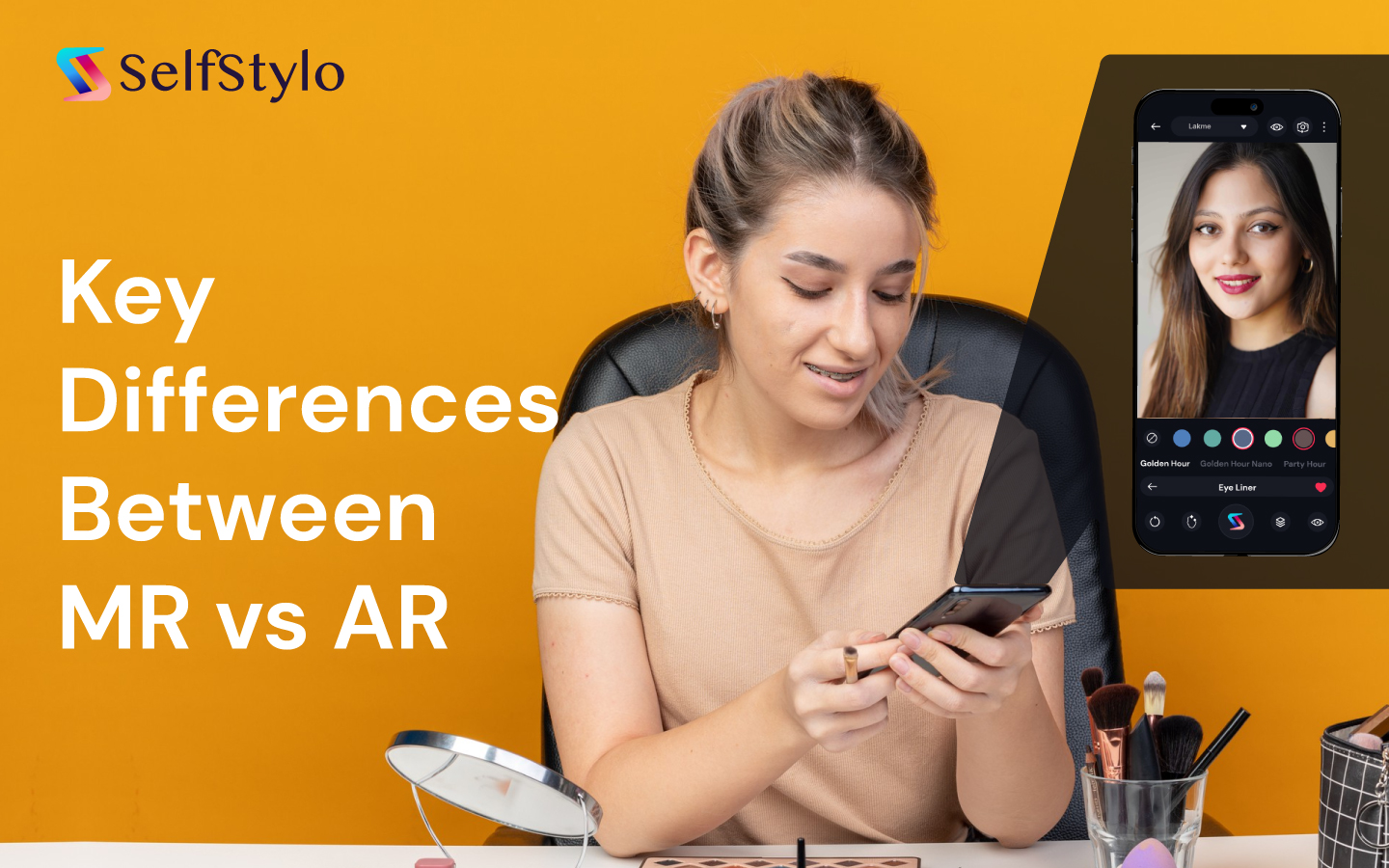AR and MR technologies have come a long way, all thanks to the huge investments made by giants like Facebook, Google, and Samsung. We all are familiar with the concept of augmented reality, but how does mixed reality expand on augmented reality is unexplored.
While both technologies have the same aim, AR is seen finding its way into our newsfeeds frequently. The primary aim of AR is to help businesses improve customer experience and make shopping interactive. However, many industries are now investing in mixed reality to bring 3D work into the real world.
Although both augmented reality and mixed reality aim to eliminate the gap between the digital and physical worlds, their capabilities vastly differ. Unlike augmented reality, mixed reality integrates digital transformation with real-world surroundings to offer a more immersive environment.
In this augmented reality and mixed reality guide, we will reveal the basics of both technologies, how they differ, and how MR expands on AR.
Basics of Mixed Reality and Augmented Reality
Technology is evolving at a rapid pace, opening up new ways to interact with the digital world. The two popular technologies leading the way are mixed reality and augmented reality. Mixed reality is expanding on augmented reality, as the former is the extension of AR. The MR headsets create virtual objects and replace physical objects, unlike AR, which mainly uses a mobile device to function.
Before we dive deep into how mixed reality impacts the augmented reality world, let us learn the basic definition and differences between the two technologies.
Mixed Reality
Simply put, mixed reality is a technology that works by superimposing digital content onto the real world. Unlike AR, superimposition is not limited to mere interaction. MR requires users to have an advanced device that traces their movements, discerns the environment, and accordingly edits the digital content.
Augmented Reality
AR works by integrating digital content into the physical world, all using a smartphone. Augmented reality produces a mixed reality while creating captivating games like Pokemon Go to interactive advertising campaigns. Many fashion brands are leveraging the power of beauty AR filter apps to help their customers try products in the virtual world.
Mixed Reality vs Augmented Reality
Now that we have discussed the basic definition of the technologies, here are the key differences between augmented reality vs mixed reality.
| Mixed Reality | Augmented Reality |
| Mixed reality is a hybrid of augmented and virtual reality. It blends physical and digital worlds to provide interactive experiences to customers. | AR overlays digital content like makeup products, accessories, furniture, etc., in the physical world. |
| MR tech is suitable if you want to create a more immersive experience. | Alternatively, AR enhances the existing physical worlds with digital content. |
| As MR systems provide a high degree of immersion, they are used in games or simulations. | AR devices, on the other hand, are typically used as in-store displays or navigation. |
| Examples of MR include Instagram or Snapchat filters, virtual makeup, etc. | Examples of AR include SelfStylo virtual try-on, Pokemon Go, etc. |
4 Ways Mixed Reality is Expanding on Augmented Reality
Mixed reality technology is an improved version of augmented reality. It incorporates AR to enhance the immersive and interactive experience of the user. Below we reveal the four main ways that define “how does mixed reality expand on augmented reality.”
Replace Reality with a Virtual Environment
Mixed reality takes the concept of virtual environments to the next level by providing a dynamic and immersive three-dimensional setting for the user. With the help of technology, users can simultaneously experience and interact with the virtual elements and real environment.
Replace Mobile App with Headset
While AR works on the concept of mobile applications, the world of mixed reality requires users to use a special MR headset. Head-mounted displays (HMDs) or mixed reality devices enhance the user experience while using the two technologies. When users use holographic or immersive devices, they experience simultaneous interactions between virtual and real elements.
Enables Real-Time Interaction
Mixed reality lets users experience dynamic interaction. The technology belongs to the virtuality continuum — a virtual space that integrates physical elements with the digital or virtual world in real time. The mixed reality’s expansion over augmented reality allows seamless interaction between both worlds.
Convert Real-World Views into 2D Images
Visual technologies work by rendering 3D objects using 3D model data into 2D images. In simple words, rendering means converting 3D data into 2D images with the help of computational algorithms.
Hence, it won’t be wrong to say that augmented reality plays a crucial role in building the mixed reality world. Every aspect of mixed reality is an improved version of augmented reality and opens doors to new opportunities for users and businesses alike.
Future of Mixed Reality and Augmented Reality
We hope this how does mixed reality expand on augmented reality guide has cleared your doubts regarding the advancing technology. In 2023 and beyond, the world can expect further improvements in both the leading technologies. Brands will also shift from traditional solutions to augmented reality and mixed reality. They will incorporate AR solutions to showcase their products in the virtual world and interact with customers better.
If you are a fashion brand looking to tap into the world of augmented reality, virtual reality, and mixed reality, consider integrating AR apps like SelfStylo. The virtual try-on makeup tool is capable of helping users view 100+ makeup shades in the virtual world. Thus, it allows customers to buy with confidence.
Schedule a free demo with SelfStylo experts and get ready to tap into the world of augmented reality and mixed reality.




